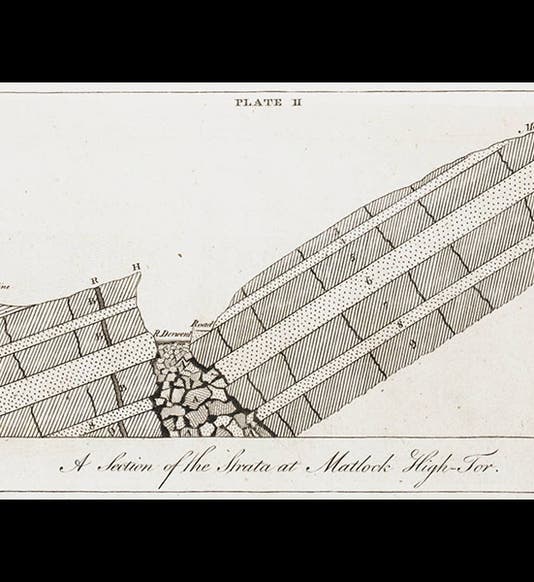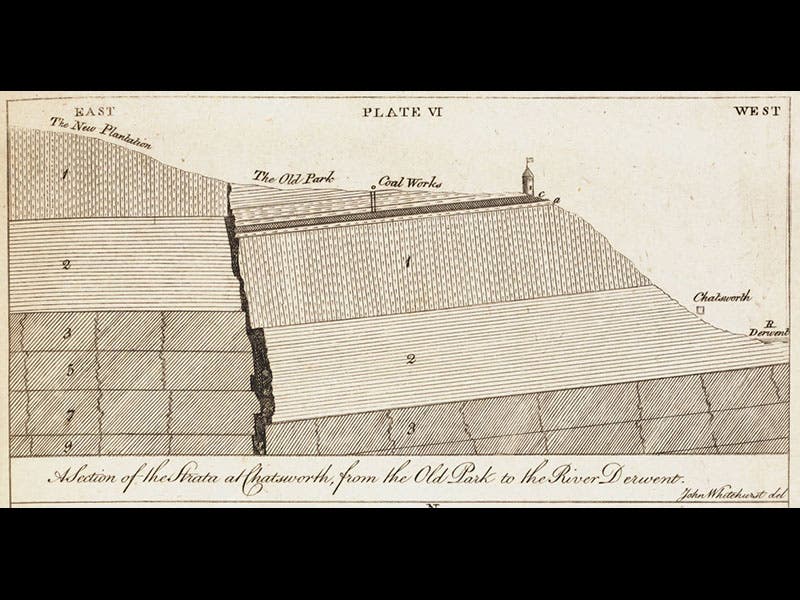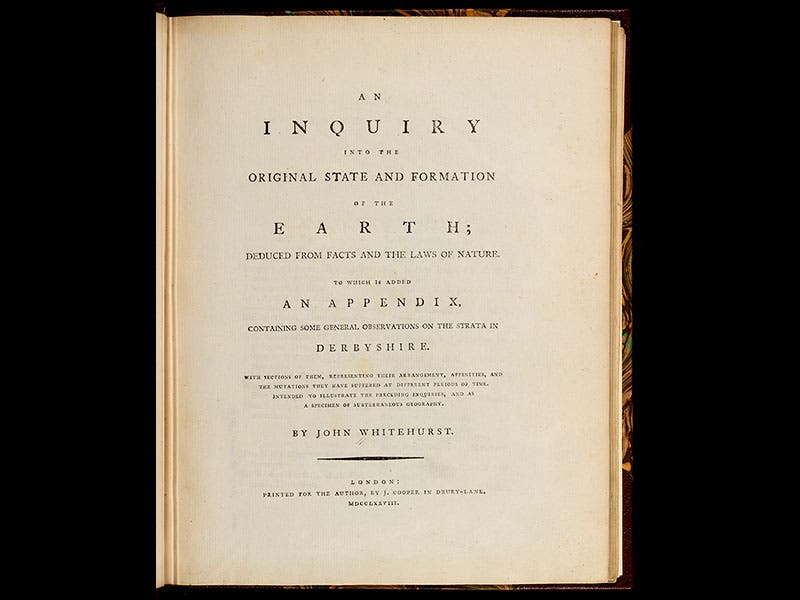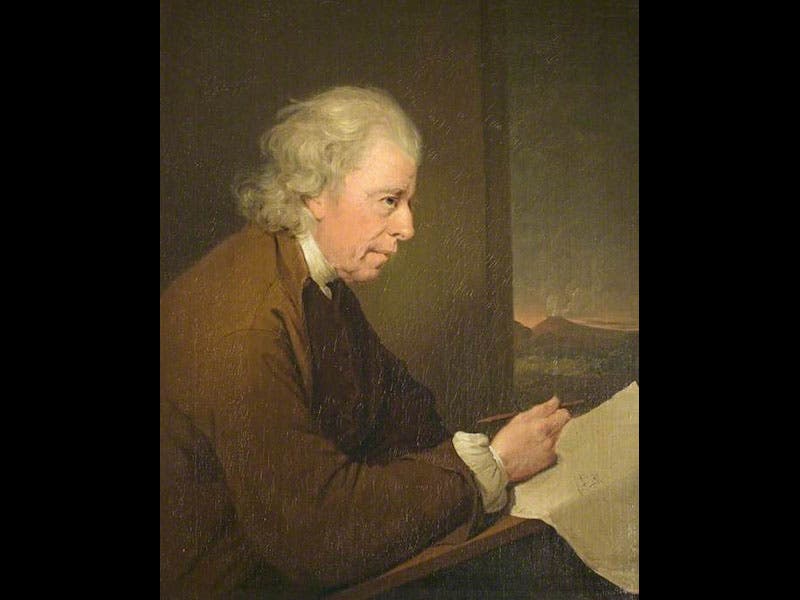Scientist of the Day - John Whitehurst
John Whitehurst, an English geologist, was born Apr. 10, 1713. Whitehurst lived in Derby in the East Midlands and was a charter member of the famous Lunar Society of Birmingham, a convivial group that included the potter Josiah Wedgwood, the physician and grandfather Erasmus Darwin, and Matthew Boulton, partner with James Watt in constructing steam engines. Whitehurst wrote a "theory of the earth" in 1778, called An inquiry into the original state and formation of the earth (1778; third image), to which he added an appendix on the stratigraphy of Derbyshire, and here he recognized that the Derbyshire "toadstone," a curious rock layer with tiny air-holes that occurs in the local strata, is actually a kind of basalt and was volcanic in origin, deposited by volcanoes long since vanished. He stood by his conclusions, even though there was no other sign of volcanic action in the East Midlands area.
Whitehurst's book is notable for the many geological sections that illustrate the localities in Derbyshire. Sections that depict real views of the earth, as opposed to ideal sections, were still uncommon in geology. Above we see Whitehurst’s drawing of a section at Chatsworth (second image), and another at Matlock High-Tor, which includes the mysterious toadstone as layers 4, 6, and 8 (first image). We have featured Whitehurst’s Inquiry in two library exhibitions, Theories of the Earth (1984), and Vulcan's Forge (2004); the latter can be consulted online.
There is a portrait of John Whitehurst in the Derby Museum; it was painted by Joseph Wright, the esteemed Midlands artist and another member of the Birmingham Lunar Society (fourth image).
Dr. William B. Ashworth, Jr., Consultant for the History of Science, Linda Hall Library and Associate Professor, Department of History, University of Missouri-Kansas City. Comments or corrections are welcome; please direct to ashworthw@umkc.edu.










